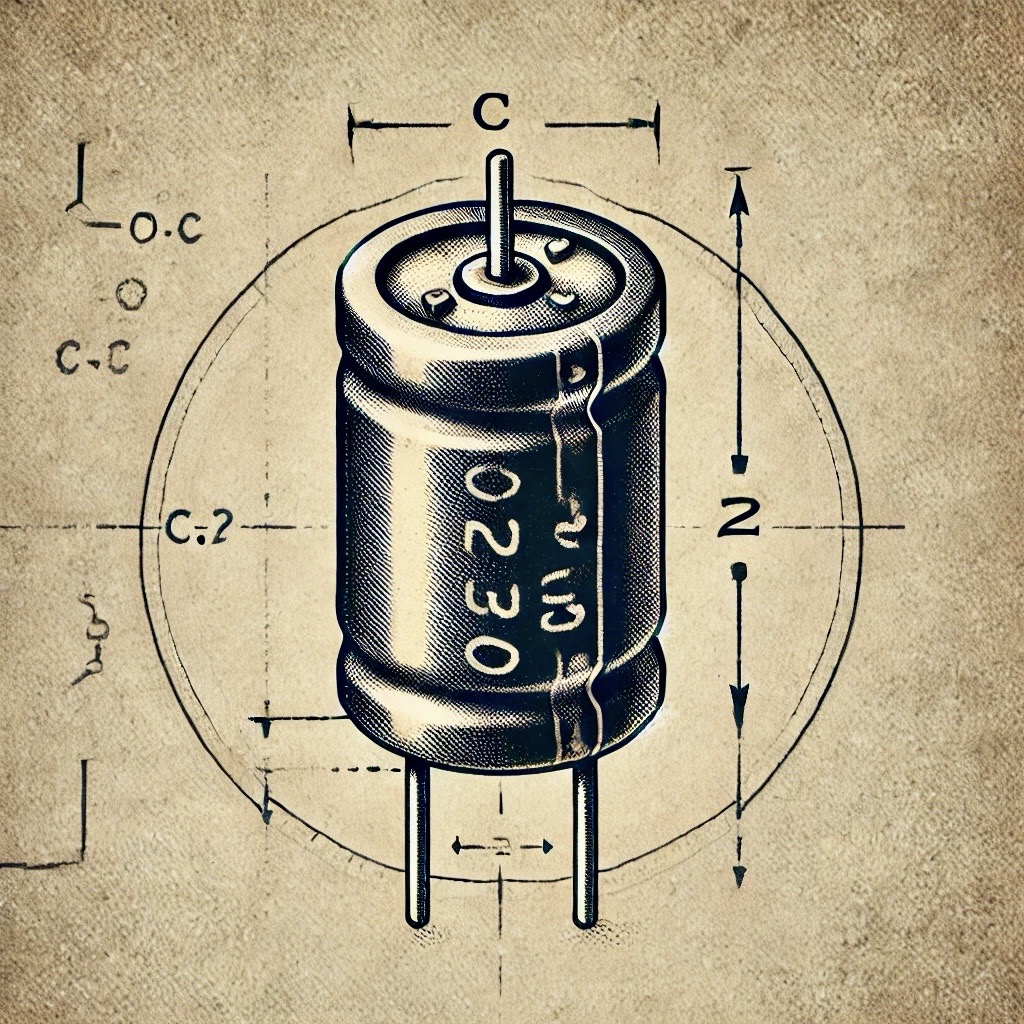Introduction
Capacitors are fundamental components in electronic circuits, storing and releasing electrical energy. Their primary function is to store an electric charge temporarily and release it when needed. This tutorial will cover what capacitors are, how they work, and their various types and uses in electronic circuits.
What is a Capacitor?
A capacitor is a passive electronic component made of two conductive plates separated by an insulating material, called the dielectric. When a voltage is applied, electric charges accumulate on the plates, creating an electric field. The amount of charge stored is proportional to the applied voltage and the capacitance value (measured in Farads).
Capacitance (C)
The capacitance is a measure of how much electric charge a capacitor can store for a given voltage. It is measured in Farads (F), although in practical circuits, capacitors are often rated in microfarads (µF), nanofarads (nF), or picofarads (pF). The capacitance formula is:
C = Q / V
Where:
C = Capacitance in Farads
Q = Charge in Coulombs
V = Voltage in Volts
How Capacitors Work
When connected to a power source, a capacitor charges by accumulating electrons on one plate, creating a positive charge on the opposite plate. The capacitor holds this charge until the voltage is removed or the stored energy is discharged through a circuit.
Unlike batteries, capacitors store energy quickly but cannot store as much energy as batteries and are better suited for short-term energy needs.
Types of Capacitors
There are several different types of capacitors, each with distinct characteristics suited for specific applications:
- Ceramic Capacitors: Non-polarized, inexpensive, and commonly used in high-frequency circuits. Capacitance ranges from a few picofarads to microfarads.
- Electrolytic Capacitors: Polarized capacitors with higher capacitance values (in microfarads). They are used in power supplies for filtering and smoothing signals.
- Tantalum Capacitors: Small, polarized capacitors with excellent stability and reliability. Often used in low-voltage circuits like mobile devices.
- Film Capacitors: Non-polarized capacitors with excellent stability, used in audio equipment, RF circuits, and high-precision applications.
- Supercapacitors: High-capacitance capacitors used in energy storage and power backup systems.
Capacitor Applications
Capacitors are used in a wide range of electronic circuits for different purposes. Here are some common applications:
- Energy Storage: Capacitors can store and discharge energy rapidly. They are often used in power supplies to smooth out voltage fluctuations.
- Filtering: In power supplies, capacitors filter out unwanted noise and smooth voltage ripple by acting as a buffer between the input and output.
- Timing Circuits: In combination with resistors, capacitors can form timing circuits for oscillators, pulse generators, and clocks.
- Decoupling/BYPASS Capacitors: Used to isolate different parts of a circuit and filter out noise in sensitive components like microcontrollers.
- Tuning Circuits: Capacitors are used in radios and TV tuners to adjust the frequency in resonant circuits.
Capacitor Charging and Discharging
When charging a capacitor, the voltage across its terminals increases as it accumulates charge, following an exponential curve. Similarly, when discharging, the voltage decreases exponentially. This is described by the following formula:
V(t) = V0 * e^(-t/RC)
Where:
V(t) = Voltage at time t
V0 = Initial voltage
R = Resistance in ohms
C = Capacitance in Farads
t = Time in seconds
The product of resistance (R) and capacitance (C) is called the time constant (τ), which determines how quickly a capacitor charges or discharges. The time constant is given by:
τ = R * C
Choosing the Right Capacitor
When selecting a capacitor for a specific application, consider the following factors:
- Capacitance Value: Ensure the capacitor has the appropriate capacitance value for the circuit.
- Voltage Rating: The capacitor’s voltage rating should be higher than the maximum voltage in the circuit.
- Tolerance: Some applications require capacitors with precise capacitance values, while others can tolerate a wider range.
- Temperature Stability: Certain capacitors are designed to operate under specific temperature ranges without degrading performance.
Example: Capacitor in a Power Supply
In a typical power supply, capacitors play a crucial role in smoothing the output voltage. After AC voltage is rectified to DC, the voltage may have ripples or fluctuations. Capacitors help reduce these fluctuations by storing energy during voltage peaks and releasing it during drops.
For instance, in a linear power supply circuit, a large electrolytic capacitor (e.g., 1000 µF) is placed after the rectifier to smooth out the rectified DC voltage. Smaller ceramic capacitors (0.1 µF) are also placed across the output to filter high-frequency noise.
Conclusion
Capacitors are indispensable components in electronics, providing energy storage, filtering, and timing functions in various applications. Understanding the different types and functions of capacitors is essential for designing and troubleshooting electronic circuits.
